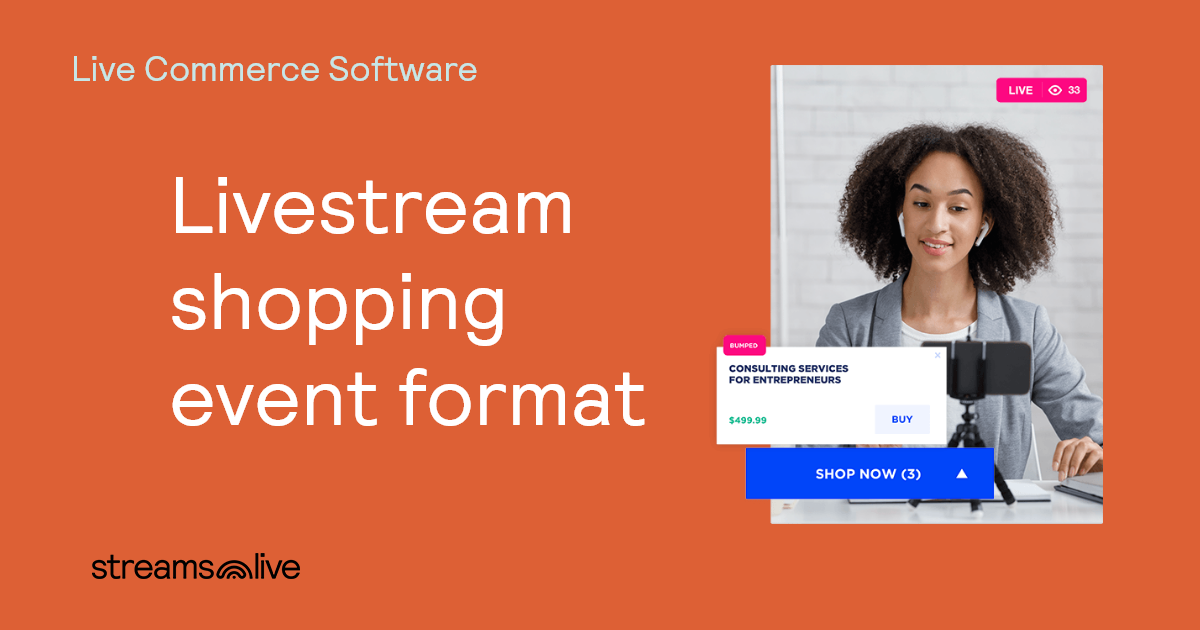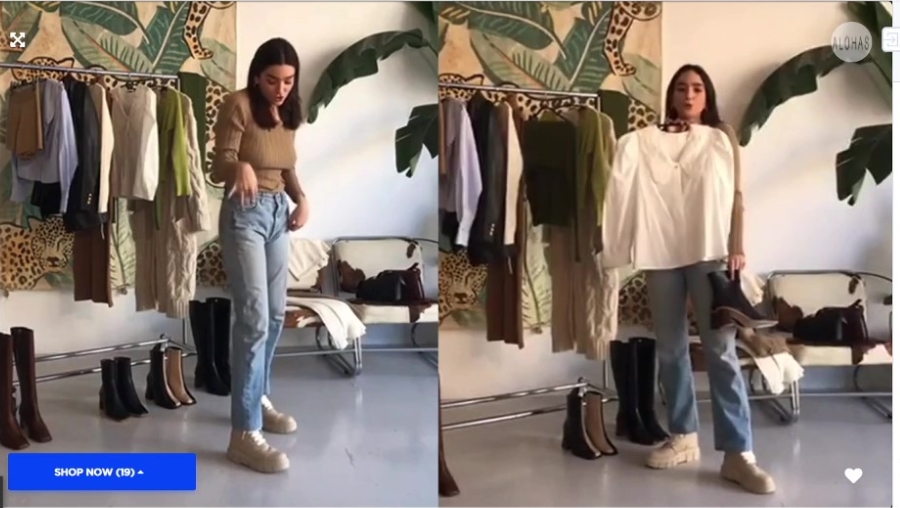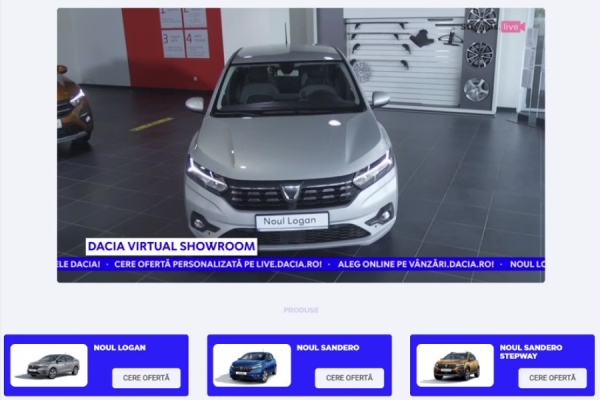
Do you know which live shopping formats work best for you and your business? If you have some doubts, this article will help you decide.
I want to guide you through different formats, to show you what worked for others, and help you get started with your own live commerce sessions.
Livestream shopping is fun, interactive and helps you get your message across the screen to your customers. All you need is a smartphone, lights and passion for the products you present. But how do you present? Here are the most important formats you can choose from to make your live shopping session stand out.
Live shopping formats: One to Many vs One to Few
One way of going through different formats is based on the number of viewers. Of course, as an ultimate goal, we want as many people as possible to interact with our products and services and ultimately, convert to customers. But as we will see below, in certain situations other approaches work better.
‘One to many’ livestream shopping format
Or, as we call it, a Live Show. As the name spells it, with this format you market your live commerce sessions to as many people as possible. Showcasing your products in front of large audiences means that you will interact with people that just started their shopping journey. You can use this format to create awareness around your brand and generate sales.
By hosting regular one-to-many live stream shopping sessions, you can create a community around your brand and move potential customers down the sales pipeline.
‘One to few’ live shopping format
We call this the “Live Party” because it’s smaller, more intimate and very friendly. The format focuses on smaller numbers of viewers, often ranging from 1 to 50 viewers. Why would I want to have fewer viewers? you may ask. For customers, this is, in fact, an assisted shopping experience, where assistants can help customers find the right products.
This is, in fact, what ready-to-buy customers are looking for. With Streams.live this is a real-time video experience, where customers can benefit from the expertise your team has around your products. This is a two-way assisted virtual shopping session. It makes your customers feel valued and important. It guides them along the way, into finishing their purchase. This is where Live Brain (our Artificial Intelligence assistant) will summarize the most important ideas from the conversation and keep hate speech out.
Live shopping formats based on who is presenting
Another way to categorize live commerce formats is based who is presenting the live session. Here, you can choose from 3 formats that we noticed are quite used. Each one has its own pros and cons.
1. Video shopping events hosted by Influencers
Influencer marketing is a growing industry. The benefits of working with well-known (internet) stars are not new. As a matter of fact, Influencers were used by brands long before the birth of the internet. Known (in the past) as Celebrity Endorsement, this format offers a trust transfer from the Influencer towards the brand itself and has been used in the last 250 years. By using Influencer Marketing brands not only gain access to new audiences but also increase the chances of customers buying their products.
Benefits of working with influencers:
Greater exposure for your brand. An influencer is someone that has already built an audience and this format will give you access to that community. But before deciding which Influencer to work with you should do your own research. Such projects work great if you choose someone that has a similar audience to yours. Otherwise, your products will be showcased in front of viewers that have no interest in purchasing them.
In general, influencers are not camera-shy, regularly performing in front of large audiences. This will bring the entertainment people are looking for in a livestream shopping event and will leave the hard work of content creation on your selected partner.
However, working with influencers is not necessarily easy. It will sometimes put pressure on your budget. But as long as you do your research and choose somebody that is compatible with your brand, the investment will pay off.
This format is best used when your plan is to create brand awareness. You get a larger audience but lower conversion rate.
2. Livestream shopping events hosted by your team
You don’t need to work with a professional to go live in front of your audience. As a matter of fact, you or a member of your team can be the host of your livestream shopping events, with great benefits in the long run.

Our partners from Alohas during a livestream shopping event hosted by a member of their team.
The rise in live video commerce has created new online sensations. The retail superstars, the experienced shop assistants can now simultaneously interact with thousands of potential customers, with a bit of help from advanced tech. Their experience, combined with their willingness to help customers, has transformed them into the right influencers for this new, engaging shopping behavior.
Such a phenomenon is Li Juaqi, that initially started as a shop assistant for L’Oreal in Nanchang, China, and transformed himself into a livestream shopping superstar. He once managed to sell more than 15.000 lipsticks in just 5 minutes and sold almost $150 million in sales. In just one day.
The two main reasons that make this format highly appreciated are:
- While purchasing goods online, customers have at least one question they need to find answers to. By interacting with somebody that knows a lot about the products they will be able to find those answers on the spot. Once they find the answer, they are only one click away from buying. And this counts!
- Nowadays, letting people know who you and your team are is hugely important. 85% of customers say that authenticity is important when deciding which brand to support with their wallet.
A livestream shopping session hosted by you or one of your colleagues may seem strange. But it is actually the best solution if you plan to create a community around your brand. It’s also the best option if you have a long term live commerce strategy, which I would encourage.
This format will generate a lower live audience, but with great conversion rates. And it works best when you focus your marketing efforts on re-engaging internet users that have previously interacted with your brand. Following this format, our partners have experienced live sessions with up to a 70% Product Page conversion rate.
3. Livestream shopping events format #3: influencer + shop assistant
The third common format is a mix of the two mentioned above, combining the best of both worlds. On one hand, you have the influencer. Someone that has experience in front of the camera and has already created an audience. This can drive awareness and influence towards your brand. On the other hand, you have somebody from your own team, a person that knows the products in-depth and can answer any question that comes from the viewers.
Following this format, you can create an engaging mix of entertainment and assisted shopping. This is that “shoppertainment” phenomenon that everybody is talking about.
Benefits of using this mix:
By creating a livestream shopping session with two (or more) hosts, you will be in that sweet spot between brand awareness and conversions. You will reach a broader audience than if you would go live by yourself. At the same time conversion rates will be higher than within a session hosted only by an influencer.
There’s one more way you can look at live shopping formats: by how people access them.
Lives shopping formats by access type
Another method to categorize a livestream shopping session is by access type. Based on it, sessions can be either public or private. And, further on, private sessions could be free (access based on registration or invitation) or paid. As you will see below, each has its own characteristics and each can be used for particular use-cases (without being limited to them).
Public sessions
Public sessions aim to bring as many viewers as possible to the experience. The video experience is open and anyone can attend, engage, and buy the products. Because it aims to reach a broader audience, they work great for brand awareness purposes. And they are great for Product Launches.
Case Study:

In December 2020, Group Renault was planning the launch of 3 of their new models. As Covid-related restrictions kept the showrooms closed for the public, they had to find an alternative to their classical Product Launch strategy.
By working with Streams.live, they were able to create an experiential event. This event was watched by potential buyers from the safety of their homes. The event was hosted on the company website and multi-casted to the brand’s social media platforms. There, viewers were encouraged to join the client’s website to have access to the full experience. Here, their questions were answered on the spot by the support team. The questions with the most upvotes were passed to the presenters and answered through the live video. What’s even better – the live shopping experience allowed customers to buy while watching the show.
In just 135 minutes of live video, more than 1000 cars were sold.
Now let’s move on to …
Private live stream shopping sessions
A private session based on registration works as gated content. Its goal: collecting customer data and building a closed community. This way you can have a better understanding of your viewers. You can share relevant information with them about your products and future live commerce sessions.
For example you can use an invite-only format for loyal customers. This way you are creating a feeling of belonging to the community and we all love that. This format is often used for soft launches when brands want to allow existing customers the chance to be the first to see (and buy) the new releases.
But what if you want to sell access to private sessions. Here’s another format:
Livestream shopping events with paid access
Paid access is when the live session is tailored to a specific target and has some costs associated. For example: consulting based sales. These can be sessions where you sell prescription glasses or a tailored product. In most cases, high-ticket products are involved, for example jewelry and designer clothes. The paid access makes sure that the customers attending the session really want to be there.
Final thoughts
There are multiple livestream shopping formats for you to choose from. And as you can see, each has its own benefits. Start by defining your objectives and test, test test.
At Streams.live we have a team of professionals ready to help you. If you want to use live shopping for your business but don’t exactly know what format to choose, drop us an email. A member of our team will contact you and we can advise you throughout the whole process.





